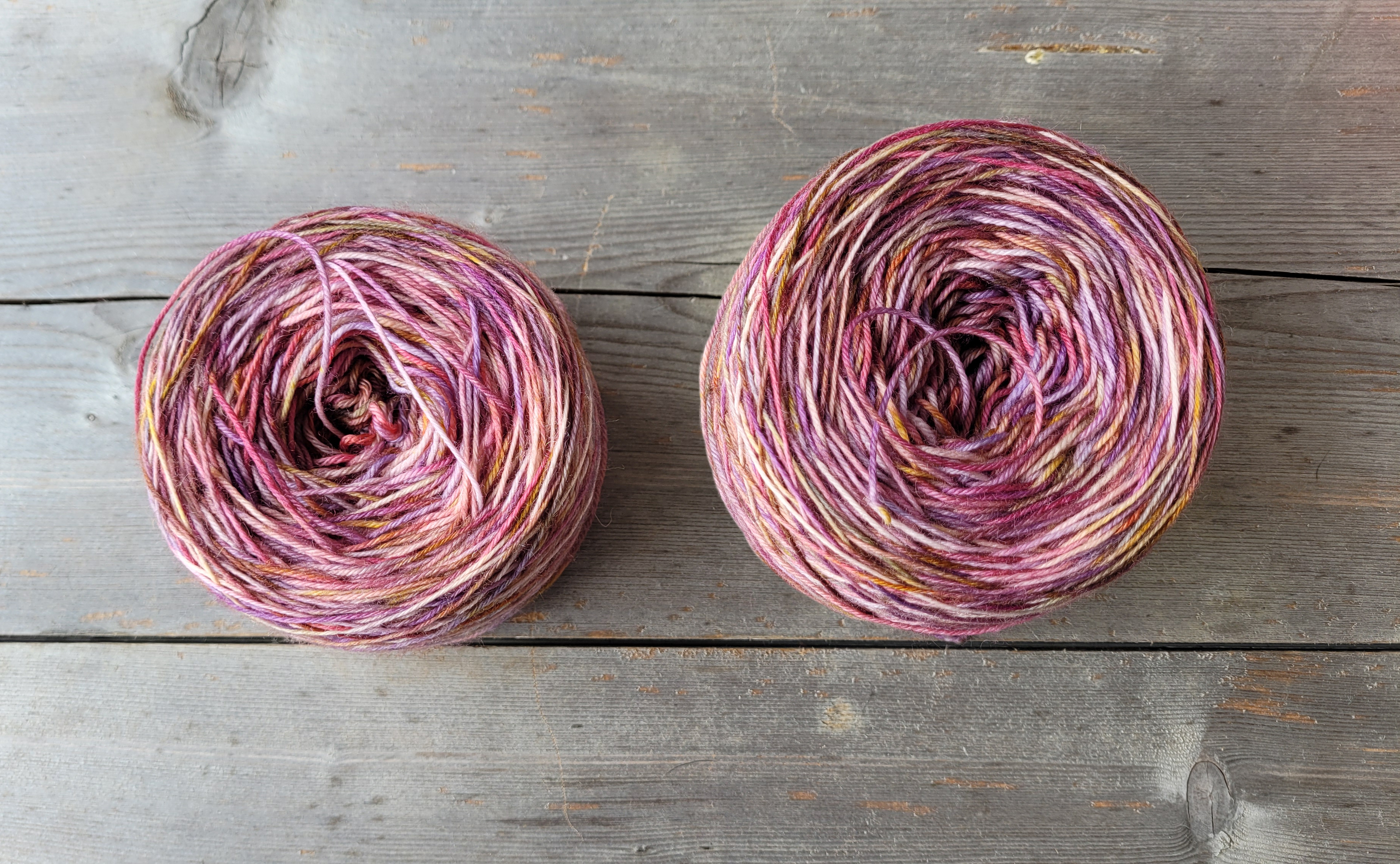
Have you ever considered the tension your yarn is under once it’s been wound into a cake or ball?
One of the main reasons yarn is sold in a skein is to preserve its elasticity. So, from the second you wind it, it’s being held at a stretch.
Animal fibres in particular have a gorgeous spring to them. If you stretch them, they snap back on release. This elasticity gives a finished garment a bounce and a wearability that is a pleasure to behold.
But if these fibres are held at their limit for too long, they can lose that elasticity entirely. That’s why you should only wind your skeins when you intend to knit or crochet with them soon after. It’s also why those old balls of donated yarn tend to seem so lifeless – they’ve been held at a stretch for decades. Yikes.
Ball winders and swifts are an amazing piece of kit I believe every crafter should invest in, but there’s a pull between swift and winder, so even they can add tension to a newly-wound skein.

See the two cakes below?
They’re actually the exact same skein.
The one on the left has been wound directly from the skein on my swift.
The one of the right is the same ball, wound from the first cake into a second, much more relaxed cake.
Look at the size difference! And imagine the tension the first one would have been under had I only wound it once.
So, tell me. Are you kind to your yarn? Do you ever rewind?
And if you haven’t done it before now, have I convinced you to start? I sure hope so! And I bet your yarn will thank you, too!
Oh! And… psst! The yarn I’ve pictured here is a beautiful skein of Ballyhoura Fibre yarn. It’s Cierra’s 4-ply sock in colourway “Pot Pourri”. Watch out for it in a pattern this autumn!
You can find the link here: https://www.ballyhourafibres.com/
Like what you see? Check these out!
-
 Finola€5.00
Finola€5.00 -
 Blue Belle Hat€4.00
Blue Belle Hat€4.00 -
 Honeymeade Shawl€5.00
Honeymeade Shawl€5.00











